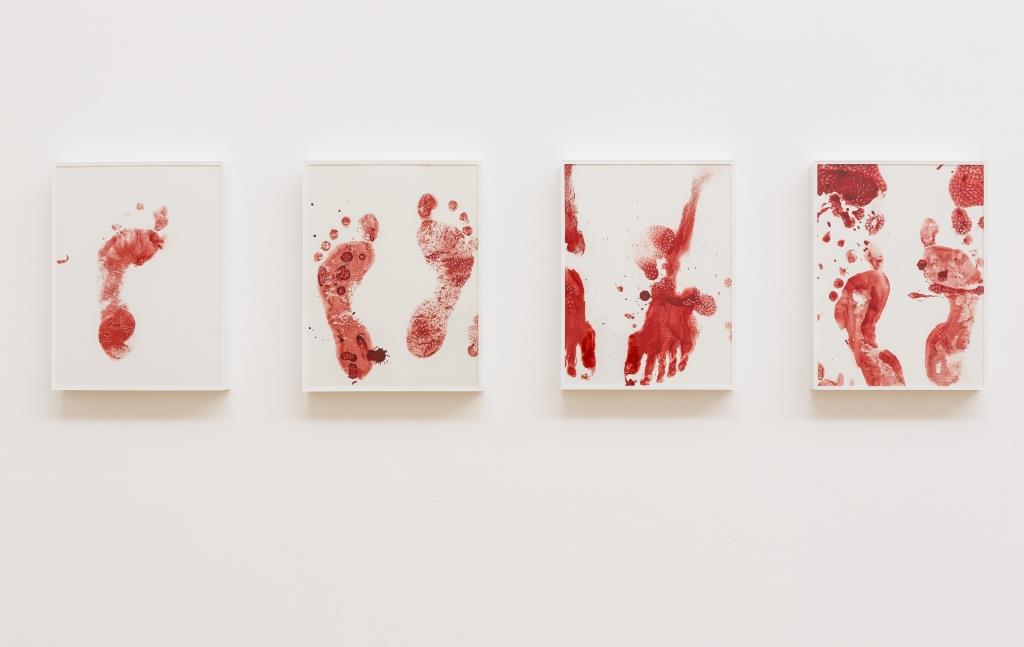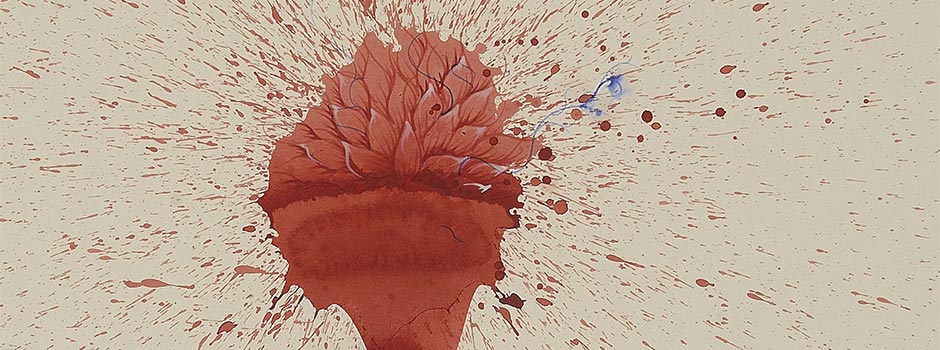

Later, as a social commentator, he began skilfully transposing his understanding of the social and political condition of his country onto what would become an idiosyncratic aesthetic portrayal of violence, despair and terror weaved tightly with germinating seeds of hope, beauty and rebirth. In one of the interviews I read in the exhibition’s “Reading Lounge”, Qureshi tells that since early childhood, he has been interested in the socio-political situation of Pakistan, and came to be a regular reader of newspapers.

It is this very concern about the social and the political that has been serving as one of the primary triggers for Imran Qureshi’s artistic endeavours. Not only were these four artists selected for the award based on the aesthetic particularities of their artworks, but also an essential criterion of their selection for the award constituted their individual ways of approaching social and political issues through art as a medium.


The exhibition itself is part of a programme initiated by the “Deutsche Bank”, and Imran Qureshi is now the fourth artist to have received the “Artist of the Year” award, following the Slovakian Roman Ondák (2012), the French-born Moroccan Yto Barrada (2011), and the Kenyan-born Wangechi Mutu (2010). It was certainly a most enthralling acquaintance, for, eager to acquire a first-hand experience of the art works, I came to rely on this exhibition as a guide towards my further dialogue with the works of the artist. Nevertheless, it was here, at the Artist of the Year 2013 exhibition, that I first became acquainted with Qureshi’s art works. Indeed, prior to this award, the artist – apart from having presented his works at various exhibitions, such as the Sharjah Biennial, or Corvi-Mora, London – was also commissioned to paint the roof of the Metropolitan Art Museum in New York City the Roof Garden Installation opened in May of this year and will thus welcome its visitors until November. Undoubtedly, the promising title of the exhibition suggests that the Pakistani artist Imran Qureshi had already been a widely renowned artist in the international art scene before being awarded the title “Artist of the Year 2013” on the recommendation of the Deutsche Bank Global Art Advisory Council. Instilling in me the feeling of readiness to perceive and appreciate beauty in its various manifestations, one of these art showings, the Imran Qureshi: Artist of the Year 2013 exhibition at “Deutsche Bank Kunsthalle” (formerly “Deutsche Guggenheim”), convinced me once again that the power of art can magnificently coalesce aesthetic form with profound content and meaning – without undermining one in order to accentuate the other. One of those roles, as I have repeatedly come to realize, is to encourage a new level of awareness about world problems which pertain both to our time and dwell outside the chronologically-measured realm. Placid and animated, traditional and subversive, the art exhibitions in Berlin reveal – from an aesthetically-focused perspective – this inspiring air of creativity that the city as a whole renders.Įven more so, the exhibitions often refine my understanding of the many roles of art. Yet more alluring for the art-loving residents or merely visitors of Berlin than the city’s streets and panorama could be its numerous museums, galleries and exhibition spaces that fuse within the city’s lively atmosphere while forming a world of their own. Strolling casually along the streets of Berlin frequently proves to be an especially invigorating experience: the tangible spirit of creativity, nonchalance and dynamism spreads contagiously over the city’s different districts and greatly influences my perception of it.


 0 kommentar(er)
0 kommentar(er)
